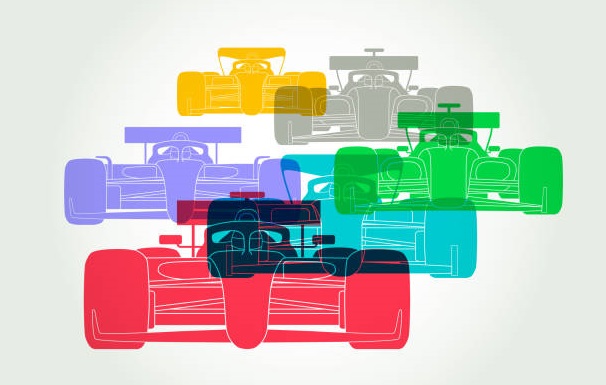There has always been more to Formula One than just speed. The world’s top drivers carve out unique identities behind the wheel, using styles that maximize their car’s strengths, minimize weaknesses, and adapt to constantly changing regulations. From the legendary smoothness of Alain Prost to the relentless aggression of Ayrton Senna, driving styles have defined eras, rivalries, and championships.
And just as every F1 driver experiments to find their perfect balance, fans can also explore excitement in their own way. Platforms such as jili ทดลองเล่นฟรี allow people to try out games in demo mode before committing, offering a safe and entertaining taste of what lies ahead, mirroring how drivers test, modify, and improve their styles before the race.
With new technical regulations for the 2026 Formula One season set to radically alter the car dynamics, understanding these styles and knowing which ones thrive under different conditions is more relevant than ever.
The Smooth Driver
Description: The smooth driver prioritizes precision over flamboyance. Every steering input, throttle press, and braking motion is measured, minimizing unnecessary strain on tires and fuel. This style is almost like a form of artistry, where consistency is king.
Pros:
- Preserves tires and fuel efficiency.
- Reduces risk of mistakes in long stints.
- Ideal for changing weather conditions.
Cons:
- Can lack the explosive pace needed in qualifying.
- May struggle in wheel-to-wheel combat against more aggressive opponents.
Notable Masters: Alain Prost was known for being smooth in the 1980s, which is why he was called “The Professor.” Jenson Button showed how patience and skill can pay off, especially when the weather is bad. Current champion Max Verstappen has evolved his once-aggressive approach into a smoother, more controlled style when circumstances demand.
2026 Outlook: With lighter, more fuel-efficient cars and simplified aerodynamics expected under the new regulations, smoothness may become more valuable again. Drivers who can use energy recovery devices without putting too much strain on their tires could get consistent results.
The Aggressive Driver
Description: Aggressive drivers attack corners and opponents with minimal hesitation. They maximize every inch of track, brake later, and apply throttle earlier, often pushing their machinery beyond its limits.
Pros:
- Brilliant for overtaking and qualifying laps.
- Intimidates rivals and forces mistakes.
- Captivates fans with spectacular on-track moves.
Cons:
- Heavy tire degradation.
- Higher risk of accidents or penalties.
- Less effective over long race distances if not tempered.
Notable Masters: Ayrton Senna’s relentless aggression defined an era; his qualifying laps at Monaco are still replayed as examples of pure commitment. In the modern grid, Lewis Hamilton’s early career showcased this style, especially his bold rookie season moves. Charles Leclerc retains this legacy, going with brave qualifying runs and bold lunges.
2026 Outlook: Aggression may face limits under the new rules, as the cars are expected to handle differently with reduced downforce in dirty air. However, on tracks with long straights and multiple braking zones like Baku or Miami, an aggressive style could still pay off handsomely.
The Tire Whisperer
Description: Tire whisperers manage degradation better than anyone else, turning rubber preservation into a weapon. They adjust lines, braking force, and throttle application to extend tire life while still maintaining a competitive pace.
Pros:
- Can pull off one-stop strategies when rivals need two.
- Gains a huge advantage late in stints when others struggle.
- Turns endurance into championship consistency.
Cons:
- Requires discipline; less spectacular to watch.
- Vulnerable in short sprints where outright pace matters most.
Notable Masters: Sergio Pérez has earned his reputation as “The Minister of Defense” not just for his defensive driving, but also for his uncanny ability to manage tires. Nico Rosberg outlasted Hamilton at times in 2016 using tyre economy. Fernando Alonso, even into his 40s, has shown how adaptability and mechanical sympathy keep him competitive.
2026 Outlook: With Pirelli expected to develop slightly more durable compounds for the new generation, tire management might not dominate headlines as much. Still, in hot climates like Singapore or Bahrain, a tire whisperer could swing the balance of a championship.
The Late Braker
Description: The late braker makes their mark in overtaking zones, braking later than anyone else while still making the corner stick. It’s a high-risk, high-reward style that requires supreme confidence in both car and reflexes.
Pros:
- Excellent for overtaking opportunities.
- Keeps rivals under constant pressure.
- Can surprise opponents even when DRS advantages are minimal.
Cons:
- Increased risk of lock-ups and flat spots.
- If mistimed, it can result in contact or penalties.
- Demands supreme physical and mental control.
Notable Masters: Daniel Ricciardo became famous for his late-braking exploits in Monaco and China. Michael Schumacher was also quite excellent at this, and he was also a great racer. Among the younger drivers, Lando Norris has displayed flashes of late-braking brilliance, particularly in street circuits.
2026 Outlook: With braking distances set to increase due to reduced aerodynamic assistance, late brakers might regain an edge. Longer braking zones will open overtaking opportunities that are harder to defend against, making this style potentially crucial in the new era.
In conclusion, Formula One thrives because no two drivers approach racing the same way. Smoothness brings patience, aggression ignites excitement, tire whispering wins strategies, and late braking delivers drama. The champions of tomorrow may not stick to one style but blend them, adapting to track conditions, regulations, and team needs.
As 2026 approaches, the spotlight is not only on who has the fastest car but also on who can master the art of driving itself. Styles win races, and legacies are written one corner at a time.



